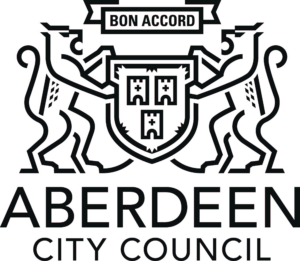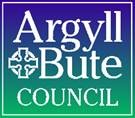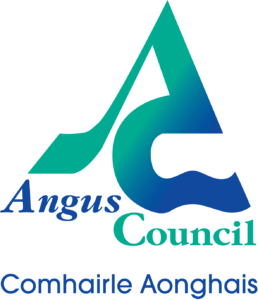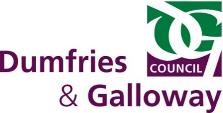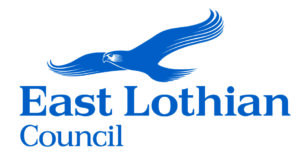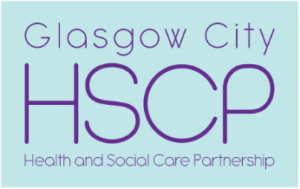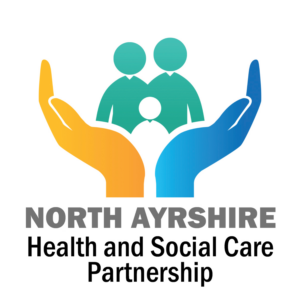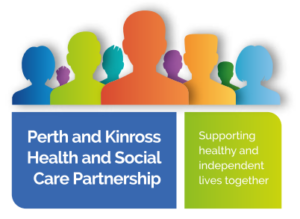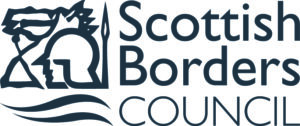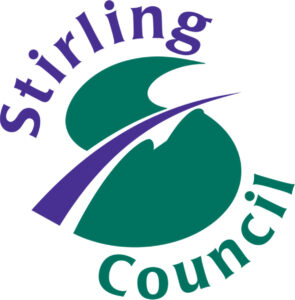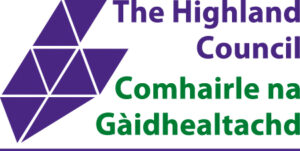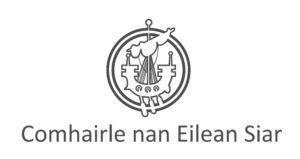Bairns’ Hoose (Scottish Barnahus) Standards Consultation
SOCIAL WORK SCOTLAND RESPONSE
November 2022
INTRODUCTION
Social Work Scotland is the professional body for social work leaders, working closely with our partners to shape policy and practice, and improve the quality and experience of social services. We welcome this opportunity to comment on the proposed Standards for the Bairns’ Hoose or Barnahus in Scotland.
Our extensive consultation process has demonstrated support for the clear rights based approach evident throughout the draft Standards. Social Work Scotland consider the draft Standards to be a positive goal, and in keeping with the commitments of the Promise and UNCRC. It is also positive that they commence with what children and young people have told us.
As with other recent proposals, however, our members, as the leadership in Social Work, have highlighted the significant resources and workforce necessary for successful implementation of Bairns’ Hoose, and highlighted the inter-dependency on other areas of practice which would also require investment to make the approach and system ‘work’. Without this investment, the positive intent and improvement in children’s experiences will not be achieved.
As noted in our response to other consultations such as the Care and Justice and NCS Bill consultations, the gap between Scotland’s ambitious rhetoric and laudable rights position in relation to children’s care and wellbeing, and our collective ability to deliver has steadily grown over the past decade. The scale of this gap and the increasing ask of a depleted workforce is reflected in the recent Setting the Bar Report1 published in June 2022, which highlights some of the increased demands on the workforce in the midst of diminishing resource. Structural changes related to the development of the National Care Service are likely to further exacerbate capacity to manage other practice and structural changes, regardless of the final decision in relation to scope.
This gap between expectation and legislation, and ability to deliver can lead to disappointment among those who should be benefiting from the increased rights and improved processes and service. As such, Social Work Scotland would strongly note that any improvements such as introduction of the Barins Hoose Standards must be fully funded in order to ensure that implementation is achievable.
The reflections within this response are drawn from wider ranging consultation with our members at both practice and senior leadership level, and discussion with key partners. They reflect the core values of social work as a profession, and of our organisation and members.
Consultation Questions:
Section 1 – children’s version
- The Bairns’ Hoose standards put children first and describe how they will be listened to and supported. Do you agree?
Completely agree/ Kind of agree/ Neither agree or disagree/ Kind of disagree/ Completely disagree/ Don’t know
Please tell us why you think this.
While we applaud the inclusion of a children’s version, there are a number of misleading areas, and some concerns that the Children’s Standards as they sit currently will raise expectations which will not be founded in reality. Additionally, at points they suggest a ‘two tier’ approach to the rights based approach which is of some concern and not in keeping with the overall rights based and non-discriminatory foundation of this approach. Specific comments to demonstrate this are below:
- Standard one states that family will be involved if the child wants them to be – this is misleading as there will be circumstances where the child’s family will require to be involved.
- Standard 3 states that the Standards are for everyone no matter why they are going to a Bairns’ Hoose. However, it goes on to single out children who are attending because their behaviour might have harmed someone. This is an unnecessary statement which risks ‘othering’ those in this category.
- Standard 4 states that there will be “separate spaces for people who may have harmed others”. This is not in line with the Standards, is impractical, and is not trauma informed. It is important that consideration is given to timetabling and related matters, but there should not be a separate area and this is not suggested by the Standards.
-
The Bairns’ Hoose standards describe a way of doing things where children don’t have to re-tell their story to lots of different people. Do you agree?
Completely agree/ Kind of agree/ Neither agree or disagree/ Kind of disagree/ Completely disagree/ Don’t know
Please tell us why you think this.
The draft Standards describe a rights based and child centered approach. They do not specifically describe that a child does not require to tell their story more than once, and such an over-arching statement could be misleading as it cannot be guaranteed in reality.
-
The Bairns’ Hoose standards describe a place that children would find welcoming. Do you agree?
Completely agree/ Kind of agree/ Neither agree or disagree/ Kind of disagree/ Completely disagree/ Don’t know
Please tell us why you think this.
Children have told us what they find welcoming and the Scottish Standards are based on extensive evidence from the implementation of Barnahus in other countries. However, while the ‘four rooms’ model is described, there remains confusion about what this looks like in practice and experience in Scotland is required to appreciate if the same model works here.
Additionally there remains confusion about whether a physical building is essential given much of the Standards and children’s feedback is about approach, relationships and those working with them being skilled and informed. This is of particular importance in rural, island and geographically widespread communities and areas. It is unclear how the reference to services being under one roof ‘unless it is demonstrably not in the best interests of children’ will be interpreted – is travelling a distance considered not be in a child’s best interest, or having to stay overnight – or will this be interpreted in a narrower manner?
-
The Bairns’ Hoose standards describe what a well-run Bairn’s Hoose would look like. Do you agree?
Completely agree/ Kind of agree/ Neither agree or disagree/ Kind of disagree/ Completely disagree/ Don’t know
Please tell us why you think this.
The Standards do not indicate how a Barins Hoose should be run, but do describe the principles behind the Barins Hoose which are considered necessary for a successful service e.g. people should work together or the nature of the building.
-
Is there anything in the standards that you would change?
The aspiration within the Standards needs to be achievable, which means they must be realistic. As such they need to take account of what is possible and distinguish between the ideal and the achievable – which should be all means be stretching.
The Standards should also reflect their interdependence with other areas such as the Child Interview Model, and therefore that the ability to achieve the Standards is dependent on investment in and roll out of other initiatives.
The Standards should better demonstrate the wider context of children’s care and services within Scotland – GIRFEC, Promise the national child protection guidance.
-
How important is it that Bairns’ Hoose happens?
Very important or essential/ Kind of important/ Neither important or not important/ Not that important/ It won’t make a difference/ Don’t know
Please tell us why you think this
In an ideal world, all children’s services would be resourced and staff trained in a manner which allows for trauma informed care, especially during bleak periods in a child’s life. And this is Scotland’s goal in ensuring that ‘Scotland is the best place in the world to grow up in’ and achieving the transformation of our child care system laid out in the Promise. Bairns Hoose aims to ensure that this can happen where a child is directly impacted by abuse or harm, and ensuring that our children are protected and not further hurt by legal processes must be considered to be of great importance.
We have though not responded ‘very important or essential’. This is because, while we want the best for our children, and it could be argued that this means that establishing Bairns Hoose across the country should be an essential priority, the world within which we currently exist does not allow for a statement which prioritises one development above another without proper consideration of the wider context.
All services involved in a Barins Hoose – Social work, health and mental health, police – are under unprecedented pressures in relation to recruitment of staff, and funding with this picture set to worsen as austerity and the impact of covid continue to impact on demand for services. This sits alongside an already cluttered and extensive agenda for change which requires time, energy and commitment for the same workforce striving to deliver services.
Decisions about service improvement and specific developments which require extensive resource such as this one, must be considered within that climate.
Do you also want to give feedback on the full version of the standards? *
Yes
Section 2 – feedback on the full version of the draft standards
Do you have any general comments on the standards?
Social Work Scotland are supportive of the vision for developing the Bairns’ Hoose and can see the potential to improve children’s experiences and provide support for those who have traumatic experiences. Barins Hoose will assist towards fulfilling the expectations of the Promise and supports the journey towards UNCRC incorporation. The Scottish Child Interview Model will be at the centre of many children’s journey and existing feedback suggests that this research and evidence based model of forensic interviewing has already contributed to the aim of minimising further traumatisation whilst also seeking to secure best evidence and information.
However, as we have already seen when implementing the Scottish Child Interview Model, such developments in practice do not come without a cost, in terms of time and resources. The same challenges will arise when implementing the Bairns’ Hoose which will require significant service redesign and extra resource – funding, time and commitment. As noted in Section 1 question 6 above, this is at a time when local authorities are already facing massive challenges, in terms of limitations of resources but also recruitment and retention of staff. There is the added uncertainty of the impact of the National Care Service on services which cannot be under-estimated. Regardless of the decision in relation to children’s services the impact will be significant.
It is essential that plans for national implementation of the Barins Hoose take account of the challenging and complex environment within which we operate.
Moving on to consider the Standards more explicitly, we have a number of specific comments:
- It is positive that each standard starts with capturing what children and young people have told us. This engagement process has been robust and positively impacted upon the development of the Standards.
- It is also very important to be clear that the Standards are rooted in existing child protection systems and processes and rae not new in their entirety, and this could be further emphasised throughout the Standards as a whole.
- Although we welcome the explicit inclusion of children under the age of criminal responsibility (ACR) whose behaviour has led to a referral to the Bairns’ Hoose, it is important that the way in which the Standards reflect their inclusion does not inadvertently lead to those children being distinguished and set apart by making explicit mention of them when describing what we hope would be the experience of all children attending the Bairns’ Hoose. This is demonstrated Standard 3, Criteria 3.3 which refers to protocols being in place to support and uphold their rights – we would want this for all children.
- Further and urgent consideration needs to be given to how the Bairns’ Hoose will be delivered in remote and island communities. If local areas are to be inspected according to the Standards there needs to be further clarity in relation to the amount of leeway that is to be afforded. Is there an expectation that the Barins’ Hoose will be within the one building as suggested by the mention of services being under one roof, or for more remote and island communities (and some urban areas where travelling short distances can complex)) should this be interpreted as an approach or way of working. While it is important to be aspirational, it is also important that we are clear about the expectations across the country so that all children across Scotland are offered support that is tailored to and meets their needs. Geography will impact upon these needs, and the geography of Scotland provides its own unique challenges which impact particularly on the feasibility of the one building approach – and indeed whether this will meet the needs of children who live in island or remote communities. As such the rural and islands impact assessment must be carried out and amendments to account for those remote situations made to the Standards before any finalisation or move to implementation of the Standards.
- We also have some concerns about the role of the lead professional. It is critical that current legislative and practice frameworks which are well understood and implemented across the country are not compromised by confusion caused by introduction of a similar term and role but in one discrete context. Getting It Right For Every Child (GIRFEC) is our national framework within which all other aspects of child care and wellbeing take place. This includes Bairns Hoose, therefore the need to include and coordinate with the role of the broader lead professional within the context of any investigative or related work is critical and should be reflected in the Standards.
- Within the GIRFEC guidance the lead professional role is described as ‘an agreed, identified person within the network of practitioners who are working alongside the child or young person and their family. In most cases, the professional who has the greatest responsibility in coordinating and reviewing the child’s plan will undertake this role. …..there should always be a lead professional identified when there is a multi-agency child’s plan.’ We query therefore the need for an additional Barins Hoose lead professional role with responsibility to ensure that there is continuous and seamless multidisciplinary support and follow up for the child and their family throughout the Bairns Hoose process. This is already the role of the GIRFEC lead profession. The aspect of the role referred to in the Standards could be reflected as a function within the wider coordination of the child’s plan overseen by the GIRFEC lead professional.
- When practical examples of evidence of meeting the Standard are provided members did wonder whether these are provided as suggestions or requirements. There is concern that they may become expectations – even if the intention is examples or suggestions. Any misunderstanding would have significant implications when services are inspected.
- There is a sense that the Standards do not necessarily flow from each other and there is not a consistency of writing style throughout– it is evident that some of the text has been authored separately.
Standard 1: Key principles and the rights of the child
Do you agree with the content of this standard, including the statement, rationale and criteria?
Completely agree/ Kind of agree/ Neither agree or disagree/ Kind of disagree/ Completely disagree/ Don’t know
It is important that the rights of the child are upheld and that their best interests are central to everything that happens at the Bairns’ Hoose. Thus it is appropriate that the UNCRC is at the centre of the rationale for this Standard. There is an emphasis on children’s views being taken account of in proceedings relating to them directly and also supported participation of children attending the Bairns’ Hoose in planning service design and evaluation. However, there could be some further thought given to the wording of the criteria as the Standard moves between overall processes and individual contact, as demonstrated in 1.4.
The suggestion of online resources and leaflets explaining what happens at the Bairn’ Hoose would be very useful for families, but there could be some duplication of effort and it would be helpful if there were centrally developed resources, such as those developed by the Centre of Expertise on Child Sexual Abuse for medical examinations 2. Consideration of how information reaches those with limited or no internet access, and those requiring alternative communication methods should also be considered.
We welcome the recognition of the importance of information being made accessible to all children and the expectation that efforts are made to respect the rights of all children. It may be helpful to include specific mention of the need to consider the child’s gender identity as this is not addressed in the Equality Act (2010) which is cited in the Standard.
The role and purpose of the child’s attendance at the Bairns’ Hoose should be made clearer within this Standard to enable understanding.
It is important to ensure that the language and terminology is aligned with other policy areas such as GIRFEC. As well as making the links with UNCRC it is essential that the Standard is firmly embedded within the Scottish context.
Criteria 1.11 “Children and families are consulted about what information is shared, where possible. Their right to privacy is respected at all times unless it compromises their right to safety or justice or someone else’s right to safety or justice”. This criteria must make more explicit the circumstances in which information is shared – children and families will not always be consulted about what information is shared. As an example, the forensic interview is at the centre of the child’s journey through the Bairns’ Hoose and the child will have little or no control over how information from the interview will shared. It would be more truthful and accurate to state that the child will be advised who the information will be shared with and the purpose of this – it is essential that they are aware what information will be shared but that in all other areas, children and families will be consulted – and also to underline that all actions must be in the best interest of the child.
“What does this mean for children” is a little vague in terms of “people will stand up for your rights” – it would be helpful to be clearer about who these people are, and what rights are being referenced.
It also states that the child’s family will be involved if they want them to be, yet there will be circumstances where it will be necessary for a child’s family to be involved irrespective of their expressed wishes. For example a child may ask that a non-abusive parent is not made aware of events described in an interview but the sharing of this information may be central to ongoing safety planning for that child and other children.
The interpretation of the standard for staff is overall very positive. We would all expect that children receive “..care and support that is respectful and compassionate”. However, our members did query what the phrase “trained and competent to determine the best interests of the child” might mean in practice. Is there an expectation that a level of training/qualification will be attained by all staff employed within the Bairns’ Hoose; does this mean that within the overall staff group there will be staff with this level of training; who would determine if staff are trained and competent’ and if deemed not to be so what are the processes around this? We would also note that already core to a social workers training and registration is a requirement to practice in a human rights and best interest manner.
Given the nature of the Barins Hoose partnerships is as yet unclear, it is difficult to comment on what the standard may mean for them. However, we would note that:
- The phrase ‘give due weight’ is at best vague – what would this look like and how is it defined?
- Additionally all those involved in Barins Hoose will be subject to data protection legislation so we question the need to include a standard which refers to ‘managing and handling data legally and sensitivity’ . Perhaps this could be phrased more appropriately as ‘handles data sensitively and in line with data protection legislation’.
- ‘Designs processes around the needs of the child’ While this is laudable, it is not always entirely achievable due to other external restrictions on partners around process. We suggest the inclusion of ‘as far as possible’, or ‘takes account of’.
In summary, we are supportive of this Standard overall – it would be concerning were the leadership organisation for social work in Scotland not to agree to a principle which states that ’My rights are upheld. My best interests are always considered, I am listened to and my views are taken seriously.’ However, there is a need for greater clarity about what this looks like in practice and a phrasing of the criteria to ensure it does not reflect a misleading position to families and children.
Standard 2: Collaborative leadership and governance
Do you agree with the content of this standard, including the statement, rationale and criteria?
Completely agree/ Kind of agree/ Neither agree or disagree/ Kind of disagree/ Completely disagree/ Don’t know
Please provide us with your feedback on the standard in the box below.
Social Work Scotland agree that strong collaborative leadership is key to the success of any organisation or provision, and applies therefore to the Barins’ Hoose. We would also agree with the need to address the challenges that children and their families face as they try to navigate current, often complex, systems.
Specific comments:
This process would be helped by the Standards emphasising the link to the National Child Protection Guidance, to more firmly embed the child’s journey through the Bairns’ Hoose within existing child protections systems and processes. There is a specific need to reference and link to the role of the Interagency Referral Discussion.
Members have noted that historically much of the responsibility for services and supports provided within the Barins’ Hoose have rested with social work. The Standard states that partnerships should reconfigure services and it is not clear whether this is a “must” as some services may actually be working well in local areas and could be aligned with the direction of travel without significant reconfiguration. Further concerns have been expressed about the significant investment, both capital and revenue that such a reconfiguration would require in the context of the current pressures that organisations and staff are facing. Similar concerns have been expressed about the expectation and impact of establishing new formal partnership agreements necessary for the governance and oversight as well as for the operation and management of the Barins’ Hoose. The level of work required to create or amend positive partnerships, and to cover resources, commitment, roles and responsibilities is complex and hugely time intensive and would come at a time when structures, oversight and personnel whose role this would be are changing. The work required to make this happen cannot be underestimated.
Criteria 2.1 identifies the national and local levels at which strong collaborative leadership would be required. We agree with the importance of strong leadership at all levels but note that the leadership landscape around child protection is already busy, as evidenced by the list within the criteria. Additionally, and significantly, this does not take account of the impact of the National Care Service, and massive national structural change. Establishment of the NCS will impact significantly on leadership structures, both nationally and locally, irrespective of whether children’s services are included.
Criteria 2.2 refers to “national agreement for the governance and oversight of Bairns’ Hoose which specifies the commitment, resourcing and expectation required from all relevant agencies”. This is a massive challenge in the current climate and there is concern that such a national agreement may not fully capture the range and diversity of contexts within which the Bairns’ Hoose would be delivered across Scotland.
As is noted in the Standards, the importance of the Bairns’ Hoose being formally embedded within existing child protection partnerships, systems and processes is key. There is a need to be explicit about how any jointly agreed staffing model fits with these existing processes, and how it can be achieved in a context where most of the systems, structures and processes currently in place are experiencing change. The greatest commitment will face uncertain challenges to discussion about resources, roles and responsibilities.
Members agree with the need to emphasise that the Standards should reflect a change in the way that we do things rather than just reflecting the ‘bricks and mortar’ of a building based approach. There remains a need for further consideration of the delivery model of the Bairns’ Hoose, particularly in rural, remote and island communities. The local partnership is expected to have a clear delivery plan which is responsive to local need, but it is not clear how this will be defined, or whether consideration has been given to how many Bairns’ Hooses are likely to be needed across the country etc. This will impact upon the delivery plan and the variables therein.
Any delivery plan for the Barins’ Hoose should also take account of the team around the family and the supports that are currently in place for the children and also their parents when thinking about the delivery of the Bairns’ Hoose.
It is also noted that all partners who would be involved in the delivery of Barins Hoose, are existing public sector staff with existing comments and complaints processes. Members therefore queried whether the suggestion of a specific Bairns Hoose complaints process is expected and if so, how would this work in practice and interface with existing (statutory) processes.
When considering what this Standard means for staff the need to embed support for staff within the defined systems and processes, alongside the need for protected time and training was highlighted.
The practice examples note the need for independent registration and inspection reports confirming that the Barins Hoose standards are being met. Members are supportive of an inspection and quality assurance regime. However, these Standards are aspirational and there is a huge task to make them a reality. Additionally what this looks like will differ, and the work to get there will vary across the country. Members have expressed concerns at both how these factor would be interpreted within inspection, and query whether a further inspection process is required. Undertaking inspection as part existing child protection inspections processes would better reflect the complexity of the delivery partnerships involved in protecting children and the place of Barins Hoose as one part of that picture.
While we appreciate the aspirational nature of the Standards, and are supportive of a visionary approach to improvement, practice and oversight, it is of critical important that the Standards are explicit and that local areas have an understanding of expectations from the time that they begin their implementation journey through to establishment and inspection. This includes staffing structures and how these will interface with existing service delivery duties and roles, and overall governance – and specifically how the Bairns Hoose governance would interface with local existing governance structures and processes. There is a risk of a fairly complex governance map.
Standard 3: Inclusive access
Do you agree with the content of this standard, including the statement, rationale and criteria?
Completely agree/ Kind of agree/ Neither agree or disagree/ Kind of disagree/ Completely disagree/ Don’t know
Please provide us with your feedback on the standard in the box below.
It is very important that the Barins’ Hoose is for all children and that they all feel welcomed to the Barins Hoose. We support this being made explicit.
There is a critical need to emphasise in the Standards the role of the Interagency Referral Discussion and to clearly embed the child’s journey through the Barins Hoose within existing child protections systems and processes. Similarly, there is a need to take account of and embed in the Standards, supports that already exist for children and to consider how best to link in with and make use of existing trusted relationships. Otherwise the risk is that important information will be lost and the child will not experience the continuity of support that the Bairns’ Hoose seeks to achieve.
The criteria relating to children under the age of criminal responsibility should have the wording amended from ‘all children under the ACR’ to ‘all children under the age of age of criminal responsibility and for whom the threshold has been reached’. The current wording suggests all children under the age of criminal responsibility would utilise Bairns Hoose which is not the case. Referring to ‘children under ACR’ rather than simply ‘children who are under the age of criminal responsibility’ is also unhelpful and we suggest the removal of acronyms in this situation to avoid unnecessary focus and labeling. It may also be helpful to explicitly mention links with care and risk management (CARM) and framework for risk assessment management and evaluation (FRAME) processes.
Criteria 3.3 refers to “supporting and upholding the right of children under the ACR”. This is important for all children attending the Barins’ Hoose and would be better expressed in this way, as otherwise there is a risk of children under the age of criminal responsibility who attend the Bairns Hoose due to concerns about their behaviour being singled out. Similarly, in the section which interprets what the Standard means for children, it highlights “because your behaviour might have caused harm to someone”. We suggest this is removed – the Standards ‘are for you’ if you need to utilise Bairns Hoose, regardless of the reason for accessing the service. This would also make the section inclusive of children who may be victims or witnesses. Emphasising the need to provide a trauma informed response, tailored to the child’s individual needs for every child who attend the Bairns’ Hoose is a more helpful and UNCRC compliant approach, which avoids distinguishing of any group who may access the service.
When thinking about the needs of children in rural and island communities, the Bairns’ Hoose being “as close to home as feasible” is open to interpretation. This likely relates to the statement that staff would “work flexibly across locations where this is required”. There is a crucial need for further thought and specificity of expectation in relation to this Standard for local areas to begin to consider planning for the implementation of Bairns’ Hoose. Island and rural communities face real challenges in making the Standards a reality, ‘As close to home as possible’ in remote areas where there is one House in a locality, may mean a journey of many, many miles, several boat or plane trips, or an overnight stay. Arguments may be made that in that scenario, accessing the Bairns Hoose building is less child centered than providing for services to go to the child in a facility which is less child focused but where the child can be seen quickly and in a less traumatising manner. These very practical aspects must be addressed within the Standards.
It is stated that staff will have a clear understanding of how people can access the Bairns’ Hoose. This would routinely be via the Interagency Referral Discussion and it would be helpful for this to be made explicit within the Standard.
The practical examples of evidence of achievement refer to the “equity of delivery in remote, rural and urban areas”. We would challenge whether equity of delivery is really a desired objective – we suggest that would it be better for the provision of the service to meet a required standard but for local delivery to be tailored to the needs of children and families in their local context and community.
Inclusive access to the Bairns’ Hoose is of course essential. However, it is important that thought is given to how this is presented and also to consider whether equity of delivery should actually be an aspiration or whether the reality is more complex. Eg ‘people who speak your language’ should say ‘access to someone who is able to support your communication’ whether that is someone who speaks your language/can interpret or it is about alternative communication methods and aids for those with additional needs. This section should describe better the range of accessibility needs and that these will be taken in to account. It will not be feasible for every Bairns Hoose to have a sensory area, safe space, quiet spaces, induction loop, visually friendly communication aids and colours; it is feasible for every child regardless of their level of need, who requires a Bairns Hoose service to be treated with dignity and have their needs met in a trauma informed manner regardless of whether this is in a ‘gold standard’ building near to their home, or via trained professionals who deliver the service in a skilled, inclusive and child friendly manner in a setting which is not a Bairns Hoose but is familiar and appropriate.
Standard 4: Design and environment
Do you agree with the content of this standard, including the statement, rationale and criteria?
Completely agree/ Kind of agree/ Neither agree or disagree/ Kind of disagree/ Completely disagree/ Don’t know
Please provide us with your feedback on the standard in the box below.
We would agree with the overall Standard statement. The messages from children and young people are particularly striking in this Standard and reflect that we have always got things right in the past. “…I should have a space to be a kid” reinforces the importance of making the Bairns’ house a place that is designed for children and their families.
However, further consideration of the impact on children and their families of the need to travel to alternative destinations for medical attention is needed. This requires clarity particularly around the extent to which medical treatment is to be provided within the Bairns’ Hoose. Colleagues in both rural and urban areas have noted that health colleagues have stated that forensic medicals will not take place within the Barins’ Hoose, although some medical services will be offered. As we continue to plan for delivery of the Bairns’ Hoose across the country, health colleagues will be key in identifying locations which could offer an appropriate environment to meet the health needs of children and young people attending the Bairns’ Hoose.
It is equally important to acknowledge that for children in rural and island communities even travelling to one location could involve significant travel – and this can be true also in many more urban localities. Similar to the Bairns’ Hoose being “as close to home as possible” as described in the previous Standard, travelling to “as few places as possible” allows for considerable leeway in interpretation. It is important that there is further discussion with all partner agencies about what this might actually look like and mean for practice.
Towards the end of the rationale for this Standard it is noted “Partnerships should ensure that child-friendly spaces are also suitable for taking recordings of the required quality for interview”. This is a priority and should be emphasised from the start, rather than being an “also..” If we are to avoid children having to recount their experiences more than once, interview rooms must provide an environment which allows for high quality recording of interviews but also meet the needs of the child.
Although it would be seen as positive for children and their families to influence their physical environment, for example by controlling lighting or ventilation there could be some limitations to this should it impact upon the quality of recording of a forensic interview. All children will also not have the same needs and views in this area, which leads to a question as to whether it should be contained within a standard. Similarly, consideration needs to be given to the types of toys and similar activities/facilities made available. Toys in a waiting area should not be so engaging that a child does not want to leave them; any fidget or familiar toys that a child might take into an interview must not be of a kind that would be too distracting or impact upon the quality of the recording of the interview; toys/activities need to be safe and meet a range of ages and stages of development.
Members were in agreement with the importance of children being involved in the physical design of the Bairns’ Hoose from an early stage but it was noted that in some areas the buildings are unlikely to be purpose built which would place limitations upon the level of influence. Although agreeing with the benefits of outdoor spaces being made available to children and their families, members have noted that this may be difficult to provide in some locations, and perhaps particularly in urban areas. Similarly, the playing of music may present challenges in terms of the need to ensure robust soundproofing, and may be inappropriate for some children with additional needs.
We would suggest re-consideration of the wording “ensure that the needs of all children to feel safe are met”. Although we should always endeavour to create a safe environment, some children will be so impacted by their experiences of trauma that they find it difficult to feel safe in any situation, and particularly one whose aim is for them to talk about their traumatic experience, however well designed.
Although seen as positive that accommodation could be provided for children traveling long distances to attend the Barins’ Hoose, it was noted that this could work for a child attending for an interview or medical but would not be sustainable for children receiving ongoing therapeutic support. Recent research undertaken by Kari Stefansen and others in Norway has shown that having to travel long distances to attend the Barnahus impacts upon how the Barnahus has been used over time and this raises the question of how longer term, therapeutic support could be offered to children who live some distance from a Bairns’ Hoose. The principle of services going to a child rather than the other way round should be considered.
Despite taking account of the views of children and their families, it may not be possible for partnerships to involve children and young people in deciding upon the location of the Bairns’ Hoose as there may well be limitations upon this.
We would query the criteria which states that all services – health, police, social work, recovery and justice services should always be under one roof. Health are clear that this will not be possible. We also assume that this refers to those services linked to the Bairns’ Hoose, and not in reality ‘all’ services. Referring to the functions rather than the services may assist understanding.
Social Work Scotland acknowledges that shared systems for staff working in the Bairns’ Hoose would support joint working and effective record keeping. However, this has presented long standing and at times impossible challenges in other areas, and is likely to present similar challenge in Bairns’ Hoose, both in terms of systems communicating with each other and GDPR restrictions. Experience has shown that development of such systems take time and are fraught with challenges. One system within Barins Hoose may also simply result in additional challenges around interface and sharing of information with the systems used by organisation out with the Bairns’ Hoose service, resulting in a less cohesive approach overall for both staff and children.
The interpretation of the Standard for children again runs the risk of placing a specific spot light on children under the age of criminal responsibility who attend the Bairns’ Hoose due to their own behaviour. Whilst it is important that children do not have contact with children who are believed to have caused them harm, managing appointments and overlap is a practical and already managed task in other settings. Having separate ‘ACR’ spaces would not be in line with the UNCRC and rights based foundation of the Bairns’ Hoose. Equally relevant in this areas are children who are attending as victims or witnesses who wish to have their confidentiality protected from other children attending for the same reason.
We would therefore agree with the overall Standard. It is important that the environment meets the needs of children and their families and that they travel to as few places as possible. However, it is vital to further consider how this will be implemented in practice and this consideration should then inform development of the criteria.
Standard 5: Planning for children
Do you agree with the content of this standard, including the statement, rationale and criteria?
Completely agree/ Kind of agree/ Neither agree or disagree/ Kind of disagree/ Completely disagree/ Don’t know
Please provide us with your feedback on the standard in the box below.
This Standard could be more clearly and strongly worded. “Things are explained to me…” – members questioned whether we could be explicit about what those ‘things’ are e.g. the purpose of my attendance at Bairns’ Hoose; what is happening to me and why. It would also be helpful to acknowledge in the standard statement that planning for children is about more than staff working as a team and explaining what is happening. Planning needs to enable staff working in the Barins’ Hoose to respond to the needs of each individual child.
The rationale should make more explicit the link between the Interagency Referral Discussion and attendance at the Bairns’ Hoose, clearly stating that this would be the route by which children would usually be referred.
The rationale states that “The provision of a fully coordinated multi-agency team ensures that agencies have shared responsibility and knowledge of roles and responsibilities”. We should not lose sight of what children and young people have told us and that the child has a say over who will support them –some flexibility built into the system that is created, both within the Bairns’ Hoose and in links with the child’s wider system is therefore important.
We would agree with much of the criteria for Standard 5. However, there is some concern about how the child’s journey through the Barins’ Hoose will link in with existing supports or those that will continue beyond their involvement with the Barins’ Hoose. Criteria 5.8 refers to a lead professional and we fear, as noted earlier in this response, that this may cause confusion if the child already has an established lead professional with responsibility for coordinating overall support for the child.
What the Standard means for children explains that professionals will work together to support the child. This should reflect all those working to support the child including non-professionals, for example, the trusted person identified by the child to support them through the process. Such individuals may not have a full understanding of role of the Bairns’ Hoose. To fulfill their remit they may require training to understand the function of the Bairns’ Hoose and their role as part of the team.
There is an expectation that the Bairns’ Hoose partnership establishes an infrastructure to embed the Barins’ Hoose within the single planning process. While this would be desirable it should be acknowledged that it is likely to take time and resource to achieve. The single process also needs to be clear as the single child protection process, and linked to the national guidance. Similar issues would apply to the recruitment of team members with coordination and support roles.
The National Child Protection Guidance should be accurately captured by its proper title in the rationale for the Standard – the National Guidance for Child Protection in Scotland.
We would also reiterate our comments about not singling out any group of children.. The standards for planning for children should be built on existing knowledge regardless of the reason for referral to the Bairns’ Hoose.
In summary, we would agree with the importance of a coordinated multi-disciplinary team, set up to respond to the needs of children attending the Bairns’ Hoose, but careful consideration needs to be given to how this can be implemented in practice, and there are significant funding implications for aspects of the standard such as dedicated staff and integrated processes.
Standard 6: Interviews in the Bairns’ Hoose
Do you agree with the content of this standard, including the statement, rationale and criteria?
Completely agree/ Kind of agree/ Neither agree or disagree/ Kind of disagree/ Completely disagree/ Don’t know
Please provide us with your feedback on the standard in the box below.
The Standard statement is appropriate and would apply to children attending the Bairns’ Hoose as victims or witnesses as well as children under the age of criminal responsibility who are attending as result of their own behaviour.
It would be helpful to note that, although our aim would be for the child to provide an input free account of their experiences, some children will always need further support. This might be due to their age, speech language and communication difficulties, disability or the impact of their experience of trauma. This links to the importance of robust planning for the interview.
The last paragraph of the rationale explains the use of special measures. It is essential that the rationale captures the joint purpose of the interview – the collection of evidence and information to inform risk assessment and planning for this child and other children.
Criteria 6.3 should be expanded to state “victims or witnesses of harm or abuse”. There is also a need to detail that interviews of children under the age of criminal responsibility attending the Bairns’ Hoose will be undertaken by specially trained police officers and social workers.
Criteria 6.4 could helpfully be extended to say “relevant agencies and including people who know the child well.” It may not be necessary to specifically mention those under the age of criminal responsibility as they will be covered by “investigative interviews”.
Criteria 6.6 could be adapted to reflect that the people that know the child well may be those that have the specialist skills to support the interviewers to meet the child’s needs.
Members suggested that Criteria 6.7 could be expanded to help the understanding of colleagues who do not have knowledge of the Scottish Child Interview Model. 6.8 emphasises the need for joint training for police officers and social workers undertaking investigative interviews of those being interviewed under the ACR legislation.
Members had some discussion around Criteria 6.12, notably around the interview being used “.. to support the care and recovery of children, with consent,..” Members have no experience of this and would question whether the interviewers’ salient points and analysis of the evidence and information from the interview would suffice.
Criteria 6.7 relates to continued or further interviews being undertaken by the same interviewers. Although this would be best practice there may be circumstances, such as sickness or annual leave, that make this more challenging. This criteria could be usefully updated to say “At least one of the same interviewers” as it would be unlikely that both would be unavailable.
6.16 repeats what has already been stated earlier in the standards
When considering what this standard means for children it should be highlighted that interviewers would be speaking to people that know the child well, rather than just people that know the child. Again, these could also be the people with the knowledge and skills to support the child’s communication.
Thinking about what this Standard means for staff it is important that staff “do” rather than “can”:
- Access supervision and peer support as required…
- Access people that know the child well when planning for the interview
- Access specialist advice before interview planning such as speech and
language or mental health professionals, and
- access interpreters and any other specialist professionals to support the child’s
- Communication in the interview as required.
It is also worth noting that staff do not always require consent to review interviews and again we would question the necessity of this to support the child’s recovery.
Overall we agree with the Standard but would note that there are some important tweaks to the language which would enhance the clarity of the Standard, and that this section carries with it funding implications not least in relation to staff training and support, issues of particular pressure in the current difficult climate. The Scottish Child Interview Model so critical to the Standards is only funded to April 2024. Decisions about funding of future training and application will require to be clarified before this is explicitly build in to the standards.
Standard 7: Support through the court and legal process
Do you agree with the content of this standard, including the statement, rationale and criteria?
Completely agree/ Kind of agree/ Neither agree or disagree/ Kind of disagree/ Completely disagree/ Don’t know
Please provide us with your feedback
This is an important Standard and an area of support that has previously been inconsistent.
It is helpful that the rationale highlights how the Bairns’ Hoose could be used to support cross-examination by video link or for the giving of evidence by commission.
Although highlighting roles within legal processes the rationale should highlight that not all children will be required to give evidence in legal proceedings, and that this happens in the minority of cases.
It is positive that the criteria explicitly state that children and their families could access therapeutic support before, during or after a court case as historically there have concerns expressed and barriers around such support where a court case is pending. Again in this section there is reference to a lead professional which we have already noted is likely to lead to confusion where the child already has a lead professional, and it could be argued that their role is already to coordinate any support required. The role as detailed in Criteria 7.3 is an important one. A lack of information or support throughout the legal processes is stressful and potentially exacerbates the trauma experienced by children and their families.
It is positive that as well as the role being described at 7.3, Criteria 7.4 emphasises the rights of the child and their families. It is also important that the following point notes the right to independent advocacy through the Courts, though some oversight of what this would be useful.
We also note that “positive evaluation from children and families” is given as an example of evidence of achievement. Consideration should be given to how this feedback is sought as the experiences of children and their families will be impacted upon by factors outside the control of staff within the Bairns’ Hoose.
Overall we would be supportive of this Standard and the way in which it is framed.
Standard 8: Health and wellbeing
Do you agree with the content of this standard, including the statement, rationale and criteria?
Completely agree/ Kind of agree/ Neither agree or disagree/ Kind of disagree/ Completely disagree/ Don’t know
Please provide us with your feedback on the standard in the box below.
We agree with the importance of children receiving appropriate medical support and care without delay and in line with their right to the highest quality health.
Criteria 8.1 states that “All children can receive a comprehensive health and wellbeing assessment in a Bairns’ Hoose if required”. We understand that health colleagues have stated that some medical services will be provided within the Barins’ Hoose but it is not clear whether a commitment has been given to the comprehensive health and wellbeing assessment. This should be clarified.
The criteria state that the Bairns’ Hoose will have facilities to document abuse to a forensic standard, but we have already heard from colleagues in a number of areas that forensic medicals will not take place in the Barins’ Hoose. It would be helpful to have greater clarity around this.
It is important that the connections with the child’s wider system are clear if Bairns’ Hoose staff are to coordinate other assessments or treatment as stated at 8.3.
It is crucial that children and their families have mental needs assessed and can access support, as suggested at Criterion 8.4. However, this would require significant resource which is currently simply not available. There are extensive waiting lists for children requiring support for their mental health and given the expectation in the Standards is that the needs of families will also be met we question the viability of this Standard. We would additionally note that there is a real danger of creating a two tier standard in relation to mental health support if provision within Bairns’ Hoose is prioritised above the other well documented needs of children.
Therefore while we would be supportive of provision to meet the health and particular the mental health needs of children and their families, we fear that this is an unrealistic Standards which, by dint of its existence, will result in disappointed expectation and reduction in service in other areas. Clarity about the extent to which medical services will be provided within the Bairns’ Hoose is critical along with an acknowledgement of the significant extra resource – which we suspect does not exist – that would be required to provide the level of support for mental health needs described. This is likely also to be impacted by the National Care Service.
Standard 9: Access to therapeutic recovery services
Do you agree with the content of this standard, including the statement, rationale and criteria?
Completely agree/ Kind of agree/ Neither agree or disagree/ Kind of disagree/ Completely disagree/ Don’t know
Please provide us with your feedback on the standard in the box below.
We have stated ‘kind of disagree’ not because the ideal service would include this level of access to recovery services, but because of the feasibility and resource reasons outlined in Standard 8 response above. The comments and danger of a two tired approach also apply– a service is received if you are linked to the Barins Hoose but diluted or not received otherwise.
Specific Comments:
It is positive that the rationale states the need to embed the child’s journey through the Bairns’ Hoose within their wider context. However, it would be more helpful for there to be a different emphasis in that the child’s team within the Barins’ Hoose should be seen as part of the child’s wider team, as outlined in GIRFEC.
There are massive resource implications to 9.2, and other areas of the Standard such as children and their families receiving follow up therapeutic support if needed, or accessing specialist therapeutic support where there are conflicting needs. Where will this come from and how will it be resourced?
Children and their families should receive the support that they need, irrespective of whether there is an ongoing role for social work or whether court or legal processes are being pursued. Historically this is an area where support has been inconsistent. However, providing such support, which has not been provided before will again have significant resource implications.
There is an expectation that “services are coordinated consistent and seamless”. This will present a challenge particularly if the support that is identified is coming from elsewhere and there may also be resource issues within the other service/s.
The role of the trusted adult could be significant and as noted previously there may be a training need for this individual. As such the potential resource implications of taking on this role and any support and training required should be taken in to account. We also note that the trusted adult was previously referred to as the trusted person, we are presuming that this is the same role, and would suggest using the same term throughout.
Standard 10: Multidisciplinary staff training and support
Do you agree with the content of this standard, including the statement, rationale and criteria?
Completely agree/ Kind of agree/ Neither agree or disagree/ Kind of disagree/ Completely disagree/ Don’t know
Please provide us with your feedback on the standard in the box below.
The Standard statement should emphasise the importance of staff providing a trauma informed response to children and their families, rather than the emphasis being focused only on the protection of their rights, important though this is.
As mentioned in the rationale and expanded in the criteria, all staff should be trained to the appropriate trauma level. However, there may be some delay in this training becoming available to all staff across the country.
The shared competency framework must take account of different roles and functions. Depending upon how the Bairns’ Hoose is organised/ staffed locally it is likely that few staff will be based within the Bairns’ Hoose on a full time basis. The training, development and support needs of these staff must also be met.
We view it as positive that the criteria highlight the support needs and ongoing personal development of staff within the context of a jointly agreed workforce plan. Training and development opportunities should be made available to staff wherever in the country they are based. However any joint work is by its nature time intensive and Social Work Scotland cannot underline sufficiently the challenging workforce climate within which services are currently being delivered and therefore the importance of reflecting context and realism in the Standards
As suggested within the Standard, we agree that the partnership should “provide the environment for a shared professional culture and integration across agencies”. In local areas that have already implemented the Scottish Child Interview Model, the shared culture and integration has been key to the success of teams of police officers and social workers coming together. This has underlined that developing a shared culture is not an easy process. Additionally, the Scottish Child Interview Model training is not yet rolled out across the country – though well underway – and there are already lessons to be learned about capacity, staff turnover and longer term maintenance, as well as that shared culture remaining a work in progress.
Overall Social Work Scotland is supportive of this Standard, but recognise that this is a complex task which as with other aspects of the Bairns’ Hoose Standards, will require significant support and time to enable implementation. This should be reflected with in the Standard or within covering context.
Standard 11: Prevention, sharing knowledge and learning from good practice
Do you agree with the content of this standard, including the statement, rationale and criteria?
Completely agree/ Kind of agree/ Neither agree or disagree/ Kind of disagree/ Completely disagree/ Don’t know
Please provide us with your feedback on the standard in the box below.
It is important that we continue to learn from experiences of Bairns’ Hoose. However, this Statement should be broader. It is not just about learning from children’s experience within the Bairns’ Hoose. Learning also needs to come from the experience of professionals within and working alongside the Bairns’ Hoose and research undertaken nationally and internationally. This is reflected more accurately in the rationale but not fully captured in the Standard statement.
The rationale also highlights the importance of the Barins’ Hoose as an agent of societal change. Opportunities for sharing learning and influence should be created on a national basis to avoid duplication of effort, while also providing opportunities to respond to local challenges
Although important that review and evaluation is informed by children’s experiences, also important is that the experiences and learning of professionals working across the system inform the development of the Bairns’ Hoose. This should be made explicit.
There is an expectation that staff at the Bairns’ Hoose also undertake outreach work, with a designated lead taking responsibility for this. Again consideration will need to be given to how this fits in with other work that is already ongoing both locally and nationally to avoid a duplication of effort. Criteria 11.6 emphasises the importance of demonstrating engagement with national and international professional networks to share learning from elsewhere. This also should be linked in to the wider child protection agenda
Support to undertake research and participate in professional networks is laudable. However, within a climate of extreme workforce pressures, opportunity for such an approach by staff with the required research support context is felt to be unachievable at present. Research must also be robust and thus require involvement of academics and formal structures. This cannot sit with the staff at the Barins’ Hoose alone and will require external support.
What support is needed to implement the standards?
We cannot underestimate the level of support that is required to make the Standards a reality – support which encompasses knowledge, development of the necessary skill base across disciplines, funding, staff resource and time and development commitment from a range of partners and agencies. This comes at a time of staff shortages and pressures at a previously unknown level, within a context of unprecedented demand for services, and while we remain in a world pandemic alongside a cost of living crises which will inevitably increase demand on the services provided by those agencies. This alongside a range of legislative and policy changes, and the development of a national care service which will consume resource, time and energy.
Whilst overall supportive of the Standards and aligning with the wish to improve the current experiences of children and young people, we consider that the Standards and development of Bairns’ Hoose require to be considered in terms of timing, and capacity for change – both within the sector and workforce, and financially.
It is critical that careful consideration is given to practical support for the implementation of these Standards before any finalisation or publication. Publishing the Standards will not in itself result in the significant development in practice required to facilitate the positive changes in children’s experiences being sought, and if done without the resource to make them a reality alongside, will add to the distress of families and pressure on staff.
Although there is much learning and research from experiences in other countries, attention should be given to continuing to learn from experiences within the Scottish context, additionally ensuring that mechanisms are in place to share this learning with partner agencies across the country.
This knowledge and expertise will only be successful if provided along with the financial support and resources required to meaningfully implement this important area of work. As noted, some of those resources may not be achievable in the current high demand and change environment.
Support for implementation in various forms is of vital necessity, both prior to local areas seeking to establish their own Bairns’ Hoose and for some time thereafter. This support should be tailored to the needs of the local area, for example the support required in North Strathclyde will be very different to the support that will be needed by an area that is just starting their Bairns’ Hoose journey or a rural or remote area.
Social Work Scotland and other partners have a role in supporting this process of implementation but there is also a central role for Scottish Government colleagues and the National Governance Group.
Section 3
- Is there anything that has been missed from the standards?
As mentioned in our overall comments, further attention should be given to the Bairns’ Hoose relationship within wider child protection systems and processes and, indeed, the child’s wider system more generally.
Additionally missing from the Standards is the resourcing of what is required to achieve the Standards to properly inform how achievable and realistic they are.
- How can people running a Bairns’ Hoose show us they are meeting the standards?
Support for implementation of the Barins’ Hoose is key to its success.
Further guidance around the Standards and explicit description of how progress can/ will be measured is important, and crucially should be realistic and embedded in wider inspection and scrutiny processes, avoiding another separate inspection process unique to Bairns’ Hoose and sitting separate to the wider child protection inspection agenda. There is also a role for internal review and evaluation; for example ongoing practice evaluation of JIIs and ACR investigative interviews will provide important information. As part of any inspection and quality assurance and monitoring, while much can be learned from feedback from children and their families who are attending the Bairns’ Hoose, this is only part of the picture. Reflections from staff working within the Bairns’ Hoose about their experiences and ongoing contribution to development of the service will also inform scrutiny around the success or the model. Similarly feedback from others in the system around the child, such as colleagues in education.
For further information contact:
Vivien Thomson
Children and Families Policy and Practice Lead, Social Work Scotland
vivien.thomson@socialworkscotland.org

